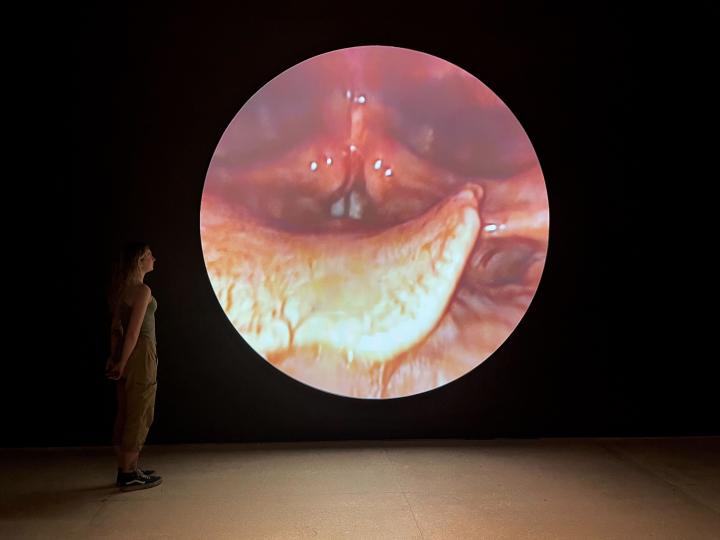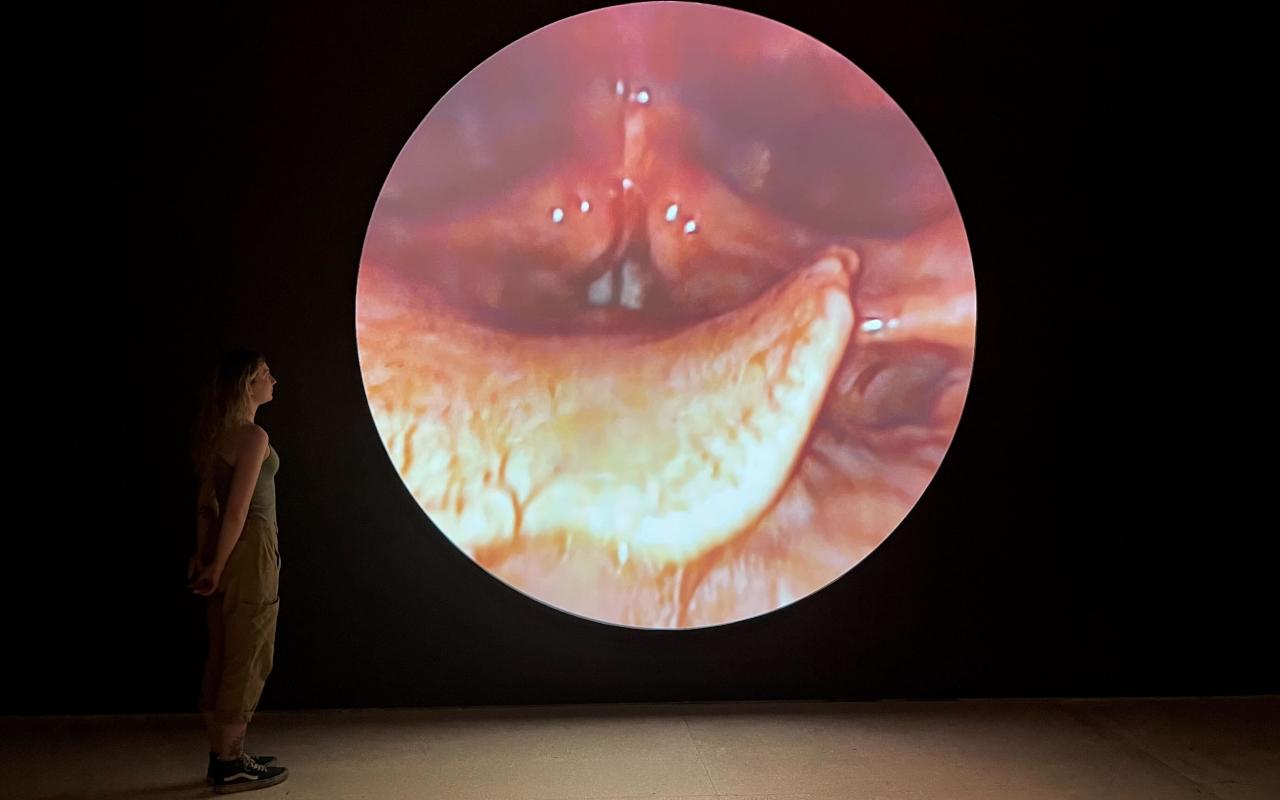Rafael Lozano-Hemmer
Vocal Folds

- Artists
- Rafael Lozano-Hemmer
- Title
- Vocal Folds
- Year
- 2019
- Medium / Material / Technic
- Projection, speakers, single-channel playback, 24’32” min. looped Text excerpt: Charles Babbage, “Ninth Chapter” (Ninth Bridgewater Treatise), 1838
-
»Vocal Folds« lets us peer inside the human body. An endoscopic tool equipped with a high-quality miniature camera was inserted through the noses of four speakers to record their vocal folds. The subjects are professionally trained actors, and they recite the same text: excerpts from the 1838 book »The Ninth Bridgewater Treatise« by Charles Babbage, who invented a precursor of modern computers.
Rafael Lozano-Hemmer’s circular laryngoscopic projection magnifies the anatomy of the human larynx. Seeing the mucous, moving hollow evokes an obscene hyperrealism, and viewers might get a sense of being addressed by a Lovecraftian monster. The recited text is an important document of so-called Natural Theology, which aimed to prove the existence of God with rational arguments and observations of nature. Babbage argues that everything that was ever said in this world remains present in the air: “The air itself is one vast library, on whose pages are for ever written all that man has ever said or woman whispered.”
Despite his use of medical technology to observe human voices, Lozano-Hemmer is not primarily interested in scientific discourse. The theo-philosophical text can be understood as a self-reference, elevating the otherwise objective images of the vocal apparatus. Art – much like Babbage’s air – serves the purpose of preserving something, of making it available for rediscovery.
